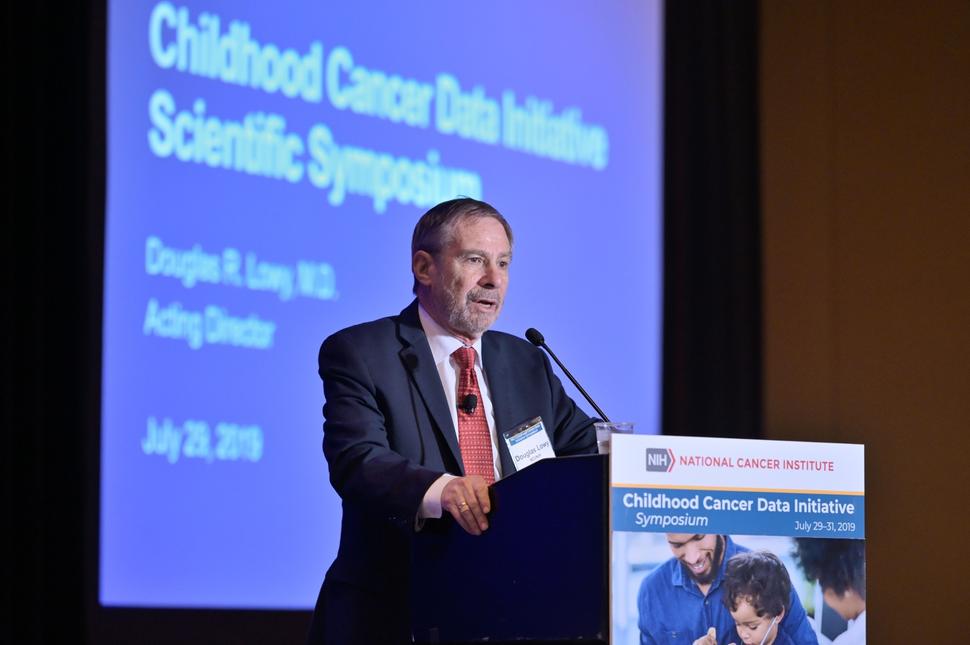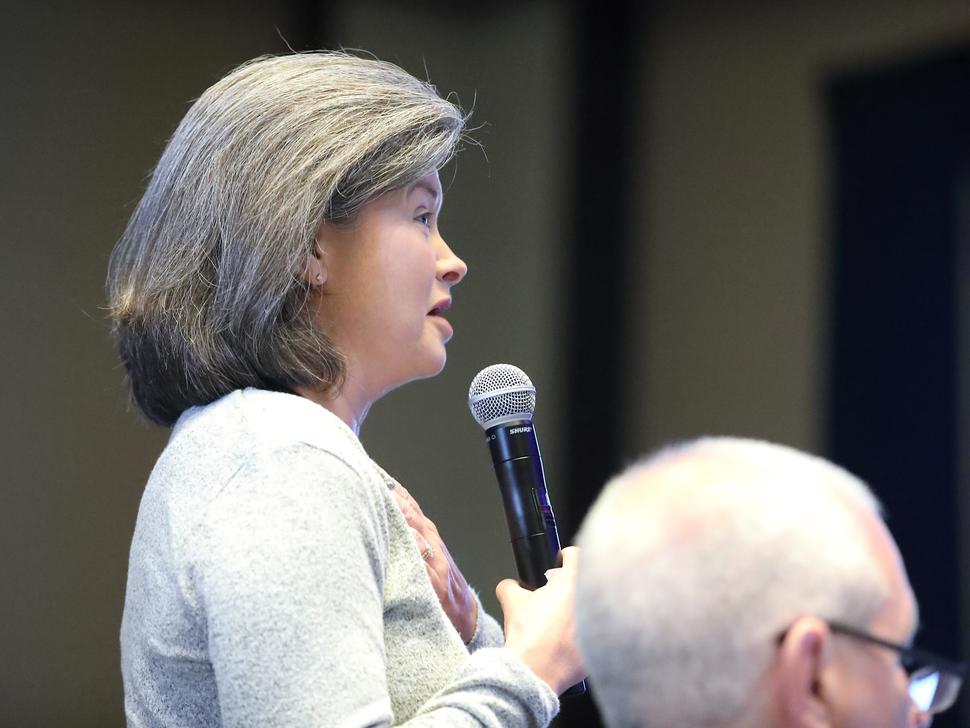The Childhood Cancer Data Initiative: Transforming the Pediatric Cancer Landscape through Sharing Data
, by Douglas R. Lowy, M.D.
Last month, I joined with NCI colleagues to host a symposium focused on the opportunities to improve outcomes for children with cancer through enhanced sharing and use of data. The symposium, held in Washington, DC, brought together more than 250 scientific stakeholders and leaders from academia, government, industry, and advocacy organizations, plus an additional 700 who watched via videocast.
Over 3 days, attendees discussed: opportunities to provide and assemble more comprehensive and meaningful datasets to better answer scientific questions and improve clinical care, challenges to developing an interconnected data infrastructure, and policies around collecting and sharing data.
The Childhood Cancer Data Initiative
As I described in a previous post, the administration has proposed $50 million per year for 10 years to speed progress for childhood and adolescent and young adult (AYA) cancer research. As NCI begins to plan for the Childhood Cancer Data Initiative (CCDI)—which these funds would help to support—the recently held symposium provided an important opportunity for the childhood cancer research community to discuss developing more efficient means of collecting, analyzing, and sharing data. The support and enthusiasm on display for this was impressive and inspiring.
Stay Up to Date on the CCDI
Visit the CCDI webpage to learn more about this initiative, view the symposium videocasts, and share your ideas via the public idea repository by August 23rd. You may also sign up to receive email updates on the progress of the CCDI.
Stakeholders attending the symposium in person participated in one of four breakout groups to identify needs, challenges, and potential solutions that could enhance childhood and AYA cancer research. The four breakout groups were focused on the following areas:
- Prioritizing scientific and clinical research data needs for therapeutic progress
- Creating meaningful datasets for clinical care and associated research progress
- Building infrastructure to enable federation among disparate pediatric data repositories
- Developing tools and methods to extract knowledge from data
Thinking Big
Although a number of challenges were elucidated during the meeting, what I found most encouraging was the consensus that standardized data, interconnected data repositories, and data sharing are both feasible and necessary.
Amanda Haddock, a parent and advocate, highlighted this point as she reminded us that what is possible and what is impossible in the realms of technology and data science shift rapidly.
She urged us to think big; not just about today, but about what may be possible tomorrow.
An Opportunity and Responsibility to Make Data Easily Shareable
Several speakers urged everyone in the pediatric cancer research community to remember the importance of our roles as responsible stewards of data on behalf of patients and families. Indeed, we must treat the data we collect as the rich resources they are and ensure that they are deployed to yield the greatest good.
The CCDI presents a tremendous opportunity—and responsibility—to leverage new technologies for gathering and integrating data and building a framework for easily sharing data among researchers who study pediatric cancer and clinicians who treat our youngest patients with cancer.
Childhood and AYA cancer advocates truly have been trailblazers in emphasizing that, as a community, we must share data if we are to make faster progress. It’s my opinion that we, as researchers, have lagged behind in this regard, and it is our duty to catch up. The symposium affirmed for me that we are willing and ready to do that, particularly in the childhood and AYA cancer communities, and I expect that will be a foundational tenet of the proposed CCDI.
At the same time, I think we must acknowledge that there have been, and continue to be, substantial obstacles to collecting, standardizing, aggregating, and analyzing pediatric cancer data. These obstacles have made the data inherently harder to share. In addition, because the overall number of pediatric cases at any given institution are small compared with other cancer types, the data have been relatively siloed.
The CCDI will help us better address and, ideally, overcome these obstacles.
Building a Cancer Data Ecosystem for Childhood and AYA Cancers
Developing better ways to collect and store multiple types of research and clinical data will make them easier for investigators and clinicians to use. Ideally, data repositories will include comprehensive and standardized patient information that covers an extensive period of time on a range of omics (such as genomics, proteomics, and metabolomics), imaging, pathology, side effects, and patient- and caregiver-reported outcomes.
We also need to build a federated data framework; an infrastructure that connects multiple existing and new data repositories and systems and offers software tools for analyzing and sharing data.
Putting these two pieces together—better data collection and interconnected data repositories—would create a cancer data ecosystem for childhood and AYA cancers that ensures data are findable and usable in a meaningful way.
Building a pediatric cancer data ecosystem will have enormous payoffs. By providing us with access to far more information than we currently have, it will help us answer many questions that, to date, have been very difficult to answer because we haven’t collected the necessary data and/or we lacked access to the data. Making data available in this fashion would accelerate our ability to transform the childhood and AYA cancer landscape with earlier diagnoses, less-toxic and more-effective treatments and, ultimately, better outcomes.
A Roadmap for Transforming the Childhood and AYA Cancer Landscape
The many suggestions that emerged from the symposium will inform an overall community strategy for how to bring comprehensive patient data together in an efficient way that will enhance our ability to understand, prevent, and treat pediatric cancers.
In the weeks ahead, we at NCI will be considering what we heard at the meeting and the ideas submitted through the online public ideas repository to plan the next steps for this proposed initiative.
As we do so, we are committed to moving forward efficiently and thoughtfully; building on the resources that already exist in the community; and keeping children, AYAs, and families at the forefront of our efforts.
Working Together to Cultivate a Culture of Data Sharing
In the spirit of cultivating a culture of sharing, I announced at the symposium that as of September 1, 2019, NCI will be removing the restrictions limiting investigators from publishing broad results using osteosarcoma data from the TARGET initiative.
TARGET is a multinational, collaborative effort to conduct comprehensive genomic analyses of osteosarcoma and other select pediatric cancers. The hope is that identifying the molecular changes that drive these cancers will lead to the development of new approaches that target these molecular changes. Until now, it has been general practice to limit publication broadly across TARGET data until the primary landscape papers have been published within each disease working group. But we cannot, in good conscience, do that for an indeterminate period of time.
I’d like to invite each of you in the cancer community to consider what you will do differently in the days, weeks, and months ahead to facilitate the use and sharing of data for the benefit of children and AYAs with cancer. My hope is that we will take the energy and excitement from this meeting and think big together, go forward as one team, and work more efficiently and effectively.
The simple fact is that if there is not a concerted effort to change—by staff at NCI, cancer centers, community hospitals, and in labs and doctors’ offices—the proposed CCDI Initiative will not be successful and will not achieve its potential to improve the outlook for many children and young adults with cancer.
Behind the Data Are Real People
Getting to our desired end—where data integration, analysis, and sharing are the standard—will take a deep and long-term commitment, policy changes, as well as a cultural shift. But I believe the research community is ready, willing, and increasingly able to get there.
As we move forward with the CCDI, we must never lose sight of the fact that behind these data are real people. Our goal is not simply to integrate and share data, but to accelerate our understanding of pediatric cancer so that we can improve the lives of children and AYAs with cancer.

